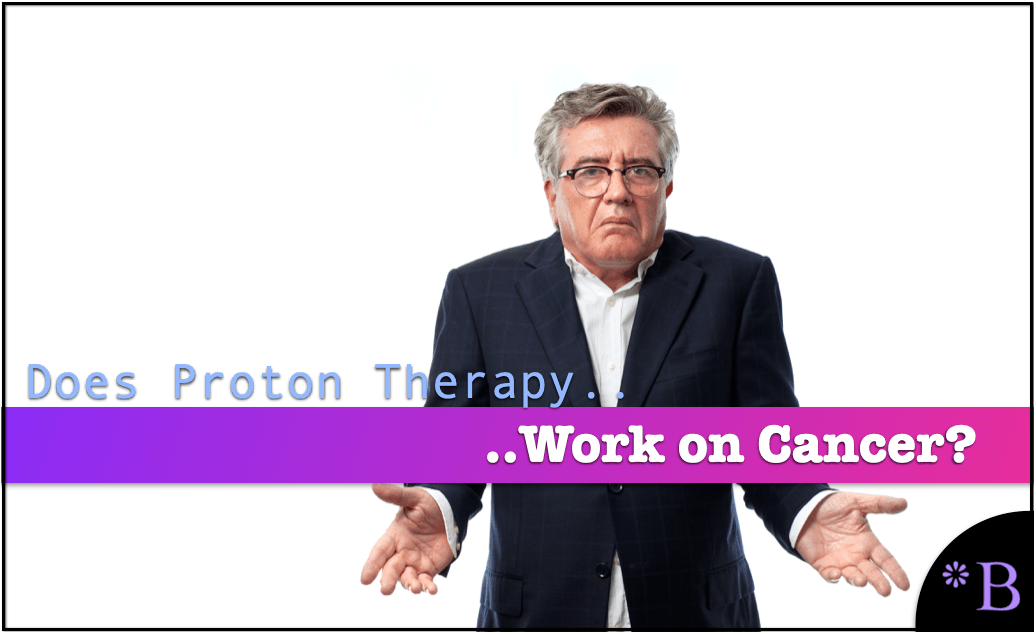Is Proton Therapy Effective Against Cancer?
Executive Summary
- One of the newer cancer treatments is called proton therapy.
- How effective is this treatment?

Introduction
Before reading this article, it is essential to read How Effective is Radiotherapy? This is because proton therapy is a category of radiotherapy, and proton therapy must be understood within the history of radiotherapy.
Is Proton Radiation Therapy New?
Articles on proton radiation therapy tend to present proton radiation therapy as new. However, it is not new. The first treatments using proton therapy go back to 1954. Yet the growth in proton therapy centers around the world has been slow.
Johns Hopkins on Proton Radiation Therapy
I found some of the best-written information on proton radiation therapy from the Johns Hopkins website. This quote is from Johns Hopkins and covers what proton therapy is.
Proton therapy, also known as proton beam therapy, is a radiation treatment that precisely delivers a beam of protons to disrupt and destroy tumor cells. Compared with traditional radiation, protons have unique properties that allow doctors to better target radiation to the size and shape of the tumor
The key benefit of proton therapy is the ability to more precisely target the tumor cells. Research shows that proton therapy results in a higher dose of radiation to the tumor but significantly less radiation to healthy cells near the tumor.
This is the main selling point of proton therapy — it is less damage to noncancerous cells.
This is explained in the following quotation.
Proton therapy is not the right choice for everyone. Some negatives of proton therapy include:
Availability: There is a small number of proton therapy centers in the U.S., which means you may need to travel for treatment that may last several weeks.
Longer planning time: Your radiation oncologist will need a few weeks to plan proton therapy. They may recommend traditional radiation if you need treatment sooner.
This dovetails with the treatment being expensive.
Interested in More?
Would you like to get access to 100% independent medical information?
The workers in the proton therapy area of the hospital are more specialized and, therefore, more highly paid. The equipment is more expensive. And because there are so few centers (37 centers in the US means that, on average, there is less than one proton therapy center in each state), hospitals can charge more for the treatment, which eventually removes many insurance companies from paying for the treatment as the following quote explains.
Insurance coverage/cost: Proton therapy costs more than photon radiation therapy because the machines and equipment for proton therapy are very complex, and they are expensive to make and operate. Some insurance providers may not approve proton therapy if there is no definitive evidence that it is a better treatment option.
- This means that proton therapy is not an option for the vast majority of people who have cancer.
- One needs “gold-plated” insurance to think their insurance company will cover such a high-end treatment.
Repeatedly the articles on proton therapy minimize the importance of cost. Johns Hopkins explains that specialists will work with your insurance company to convince them to cover the treatment. This continues a pattern I have seen in every area of medicine. While the rest of the world has to be limited by costs, medicine should not have such limitations placed on it.
Technical Information on How Proton Radiation Therapy Works
Unlike traditional photon radiation therapy that uses radiation in the form of X-rays or gamma rays, proton therapy uses proton particle radiation. Both photon and proton radiation damage the tumor’s DNA, but researchers say damage to the tumor cells caused by protons is more direct and harder to repair.
More importantly, protons only travel a certain distance into the body before they stop, and they deliver the highest dose of radiation at the end of their pathway. This burst of energy can appear on a graph as what is called the Bragg peak. Radiation oncologists plan proton therapy treatments so the maximum dose hits the tumor cells. In this way, proton therapy reduces radiation exposure and potential damage to healthy tissue, especially in sensitive areas such as the brain, eyes, spinal cord, heart, reproductive organs, major blood vessels and nerves.
It is interesting to read the description of proton therapy because all of this is compared to regular radiotherapy. Hospitals don’t discuss all of this damage caused by radiotherapy — until they have a new type of radiotherapy that they are trying to encourage patients to use.
Reading their explanations of how proton radiation therapy is better than standard radiotherapy reminds me…